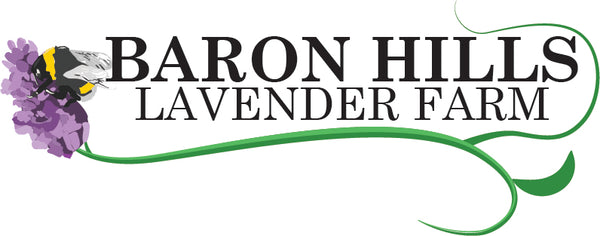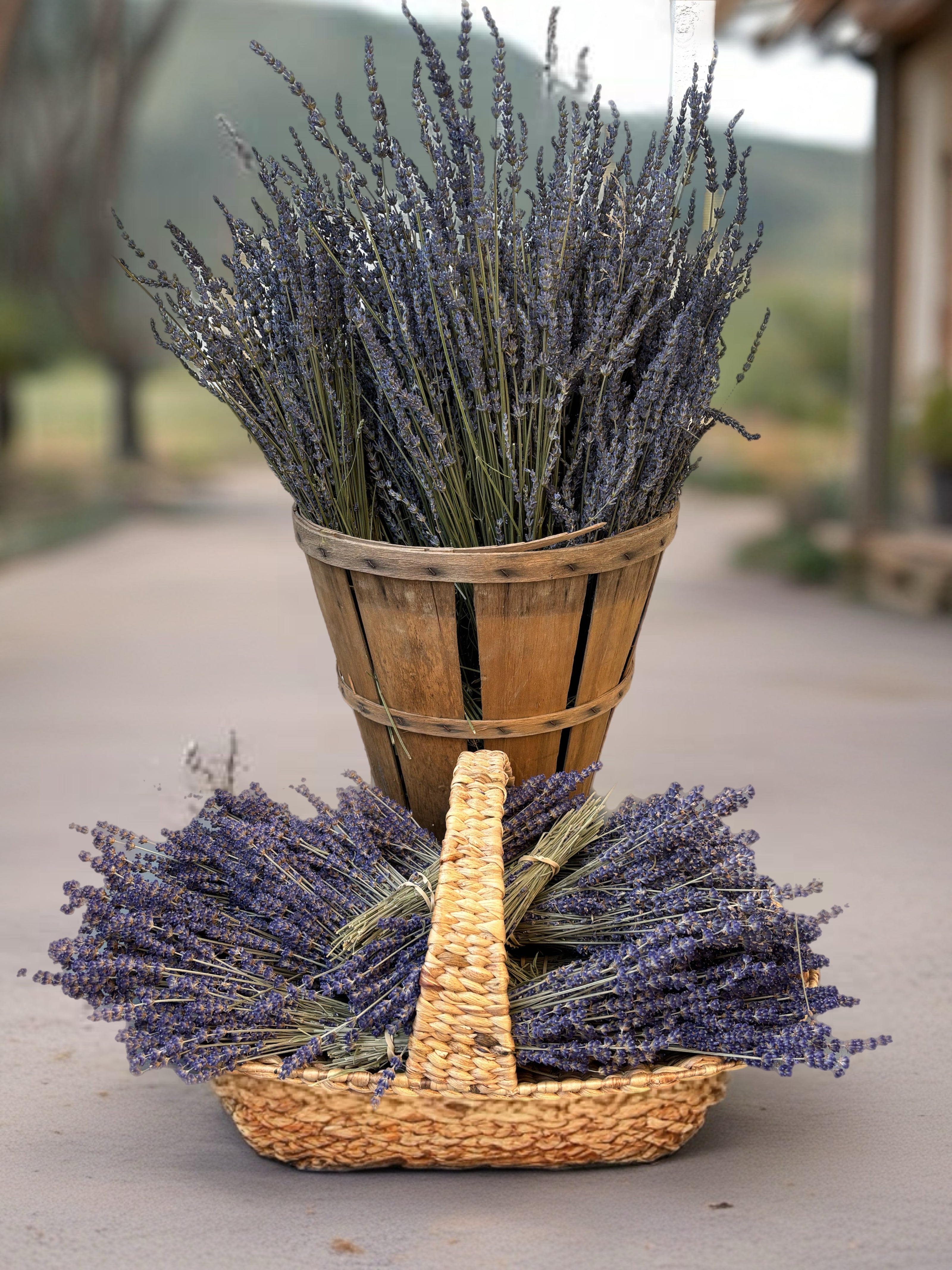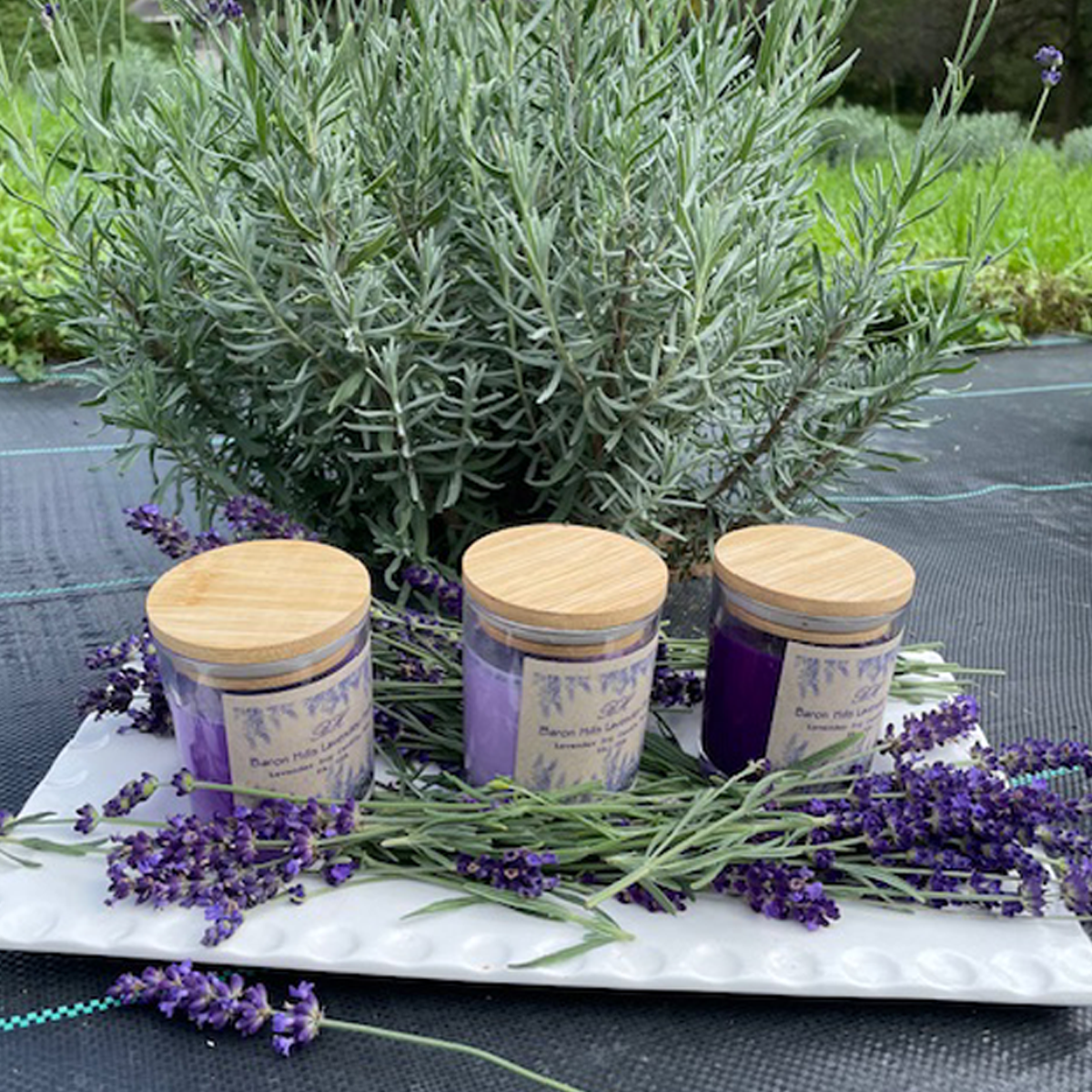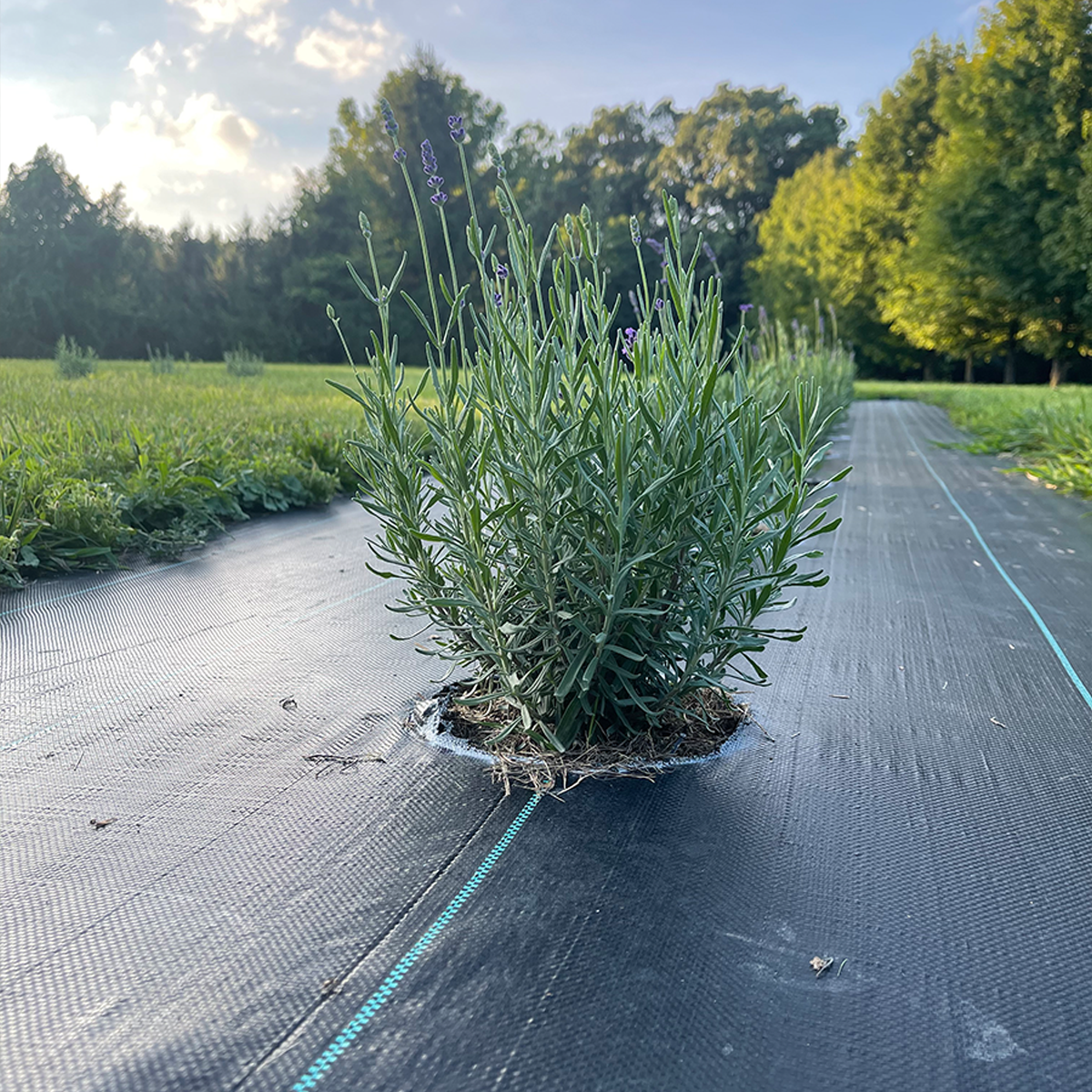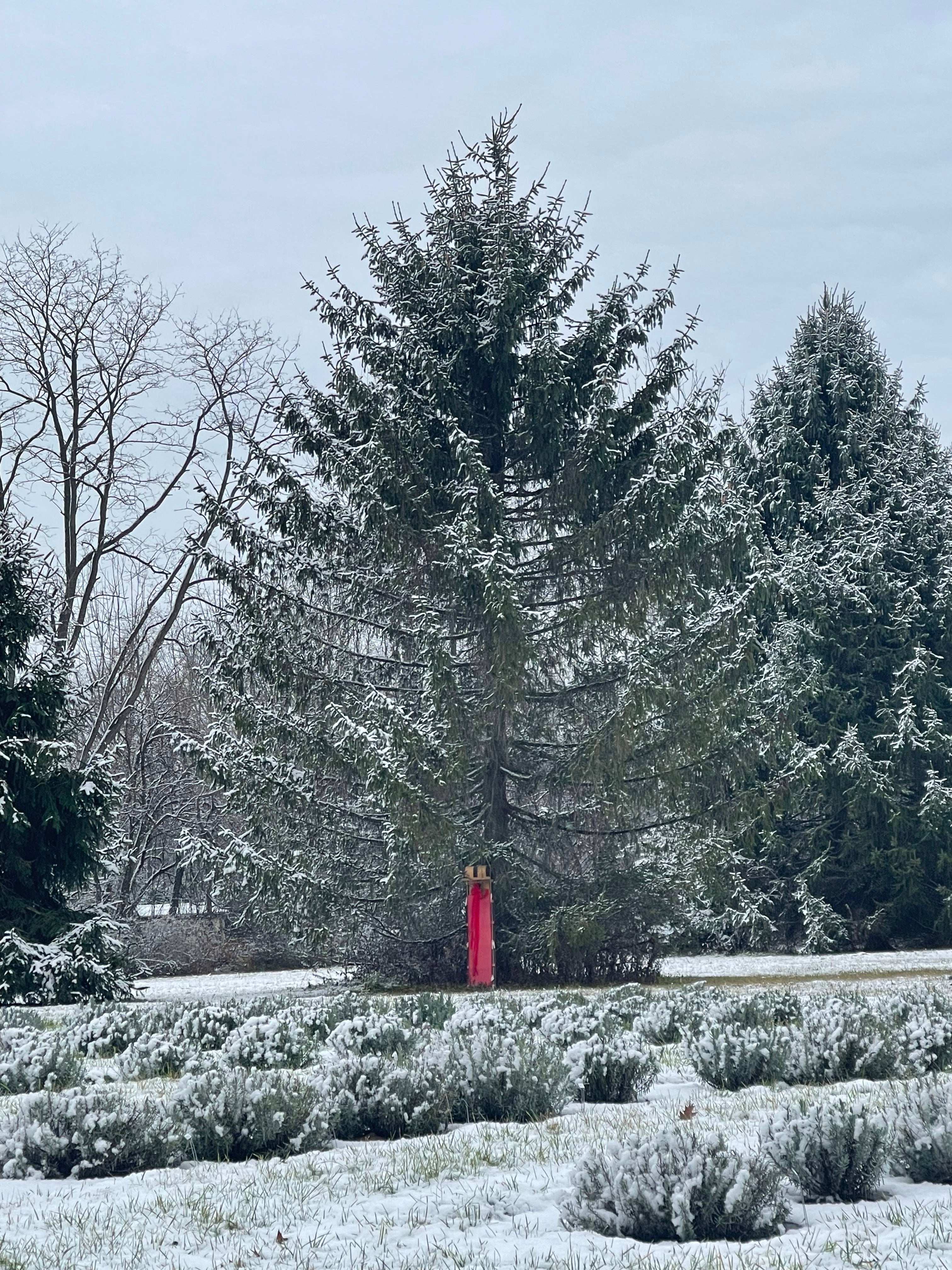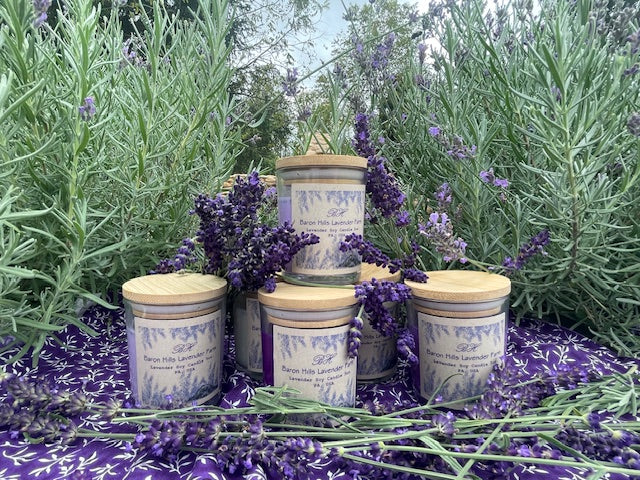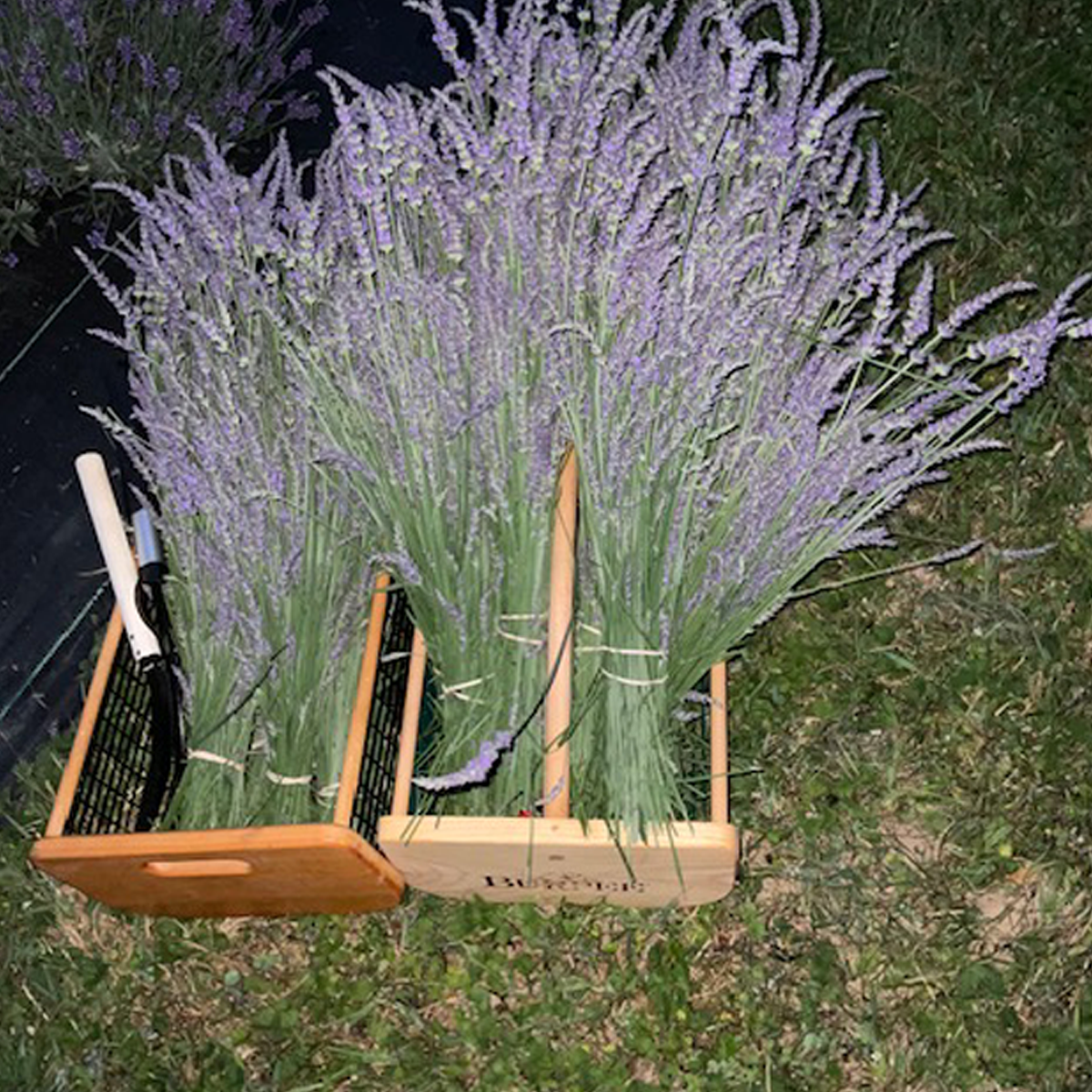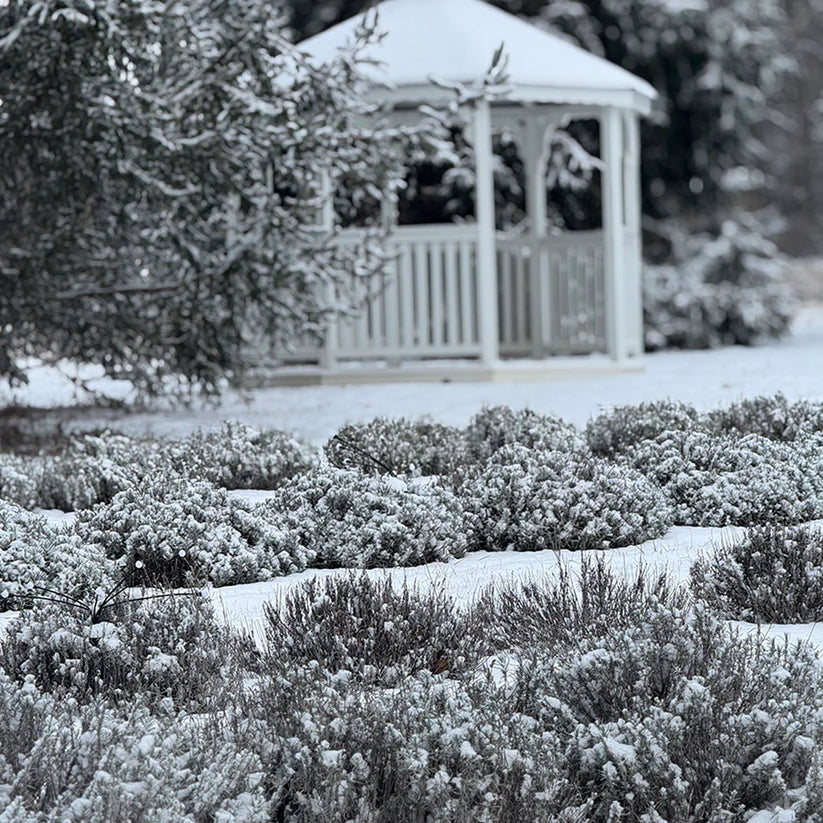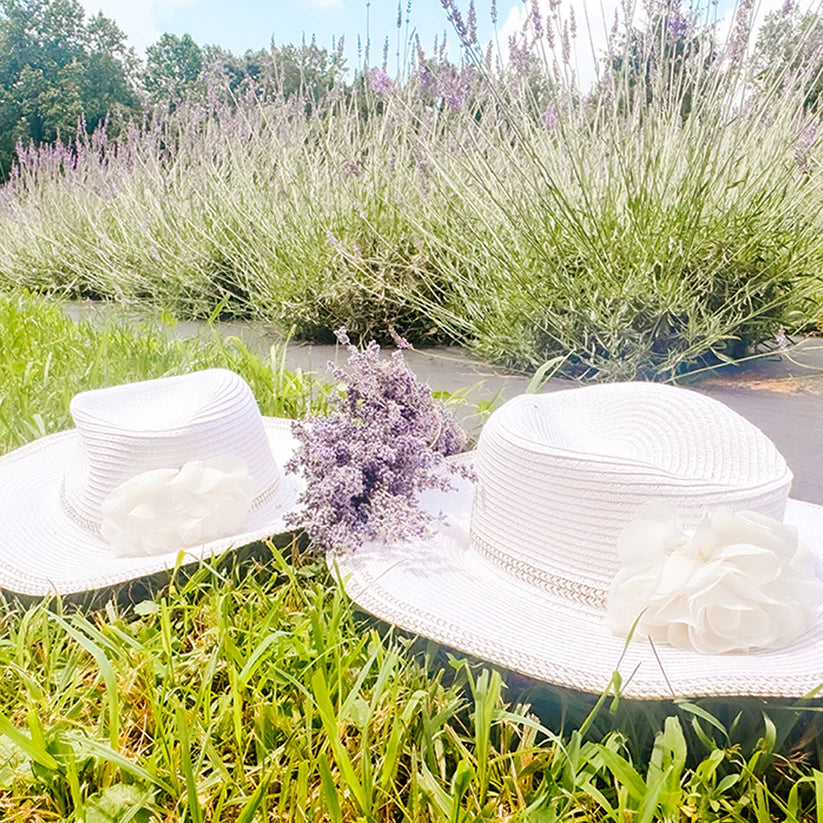About the Farm
Baron Hills Lavender Farm is located on scenic Lilly Road, in the heart of Amish country. Established in 2022, the farm has grown to cover approximately 4+ acres, with over 1,000 lavender plants in four different varieties. The field in bloom is truly amazing — a beautiful sight filled with color, fragrance, and peaceful charm.

Making Your Visit Special – Baron Hills Lavender Farm
Baron Hills Lavender Farm is a working farm. When visiting, please bring water and sunscreen, as summers are warm and sunny. The field can be uneven, so good walking shoes are recommended.
If you prefer to sit in the shade and enjoy the view, bring your camping chairs or a blanket to spread on the ground for a comfortable seat. It is fine to bring a picnic lunch.
Admission to the farm is free if you just want to enjoy the view. The farm is easily accessible from paved roads, with parking available. Additional information to help you plan your visit can be found in the farm brochure or in the FAQ section.
Farm History
In 2022, we purchased the land. The farm had previously been a Christmas tree farm. The rows of older trees in the middle and lower fields are remnants of the old pine trees. We decided to do something more productive with the 4 acres — and thus, a lavender farm was born. With its lovely fragrance and beautiful flowers, it felt like the perfect choice.
After clearing brush, the first 200 lavender plants were planted in the spring of 2022. An additional 600 plants were added in 2023, along with the gazebo.
We're still learning on the fly what works and what doesn’t, but the farm keeps improving year after year. Over the seasons, we’ve learned how to harvest and dry lavender for flower bundles and loose buds, distill essential oil, and create wonderful lavender-based products.
Informational Tidbits
Lavender is a terrific, easy-to-grow plant and looks great in your landscape. Just remember to give it full sun, plenty of airflow to keep it dry, and don’t overwater it!
The Baron Hills Lavender Farm is a lavender farm located on gorgeous Lilly Road, nestled in the heart of Amish country, near the town of Honey Brook, Pennsylvania. It is also a serene place where nature and beauty collide. The small farm, which was started in 2022, has grown into a quiet place of over four acres and more than 1,200 lavender plants in four beautiful varieties.
Pines to Purple: Our Story
The field where Baron Hills Lavender Farm currently stands underwent a true transformation since it was a Christmas tree farm. The original 200 lavender plants were planted in spring 2022. By 2023, the farm was expanded to include a new 1000 plants and a beautiful gazebo to meet its guests. The farm currently attracts lovers of lavender within the entire region in an unparalleled sensory experience.
Bathed In Lavender Bliss
With each bloom, Baron Hills Lavender Farm fosters tranquility. Curves of heavenly scented lavender wash the undulating fields in a relaxing tint of purple. Visitors visit to explore, to have a photo shoot, and to take part in the joy of lavender fragrance from the fields.
Frequently Asked Questions
How is the lavender cut?
All of our lavender is hand-cut using scissors. We gather a handful of stems into one hand and cut just above the green leaves — never into the brown, woody part of the plant.
*Each bundle is secured with a rubber band.
*After harvest, we prune the plants into shape to keep them healthy for the next season.
Should cut lavender be kept in water?
You can place cut lavender in water, but it will only last a few days. For long-term use, it's best to dry the bundles, which can last 1 to 2 years when properly stored.
How do I dry lavender bundles?
*Bend a paperclip into a hook and insert one end under the rubber band of the bundle.
*Hang it upside down in a spot with good airflow but no direct sunlight.
*In summer air, the lavender will be ready for arrangements in 2–3 days, and fully dry in 2–3 weeks.
How do I harvest dry buds?
Once fully dry (after 2–3 weeks):
*Gently rub the bundle between your hands (gloves recommended).
*The dry buds will fall off easily.
*Use a kitchen mesh strainer to remove chaff.
*Pick out any remaining stems by hand.
How do I avoid the bees?
*Bees love lavender and are usually peaceful while gathering nectar.
*Move slowly through the field.
*Tap the lavender stems gently with your scissors to encourage bees to move to another plant.
Do not swat or swing at the bees — it only agitates them.
